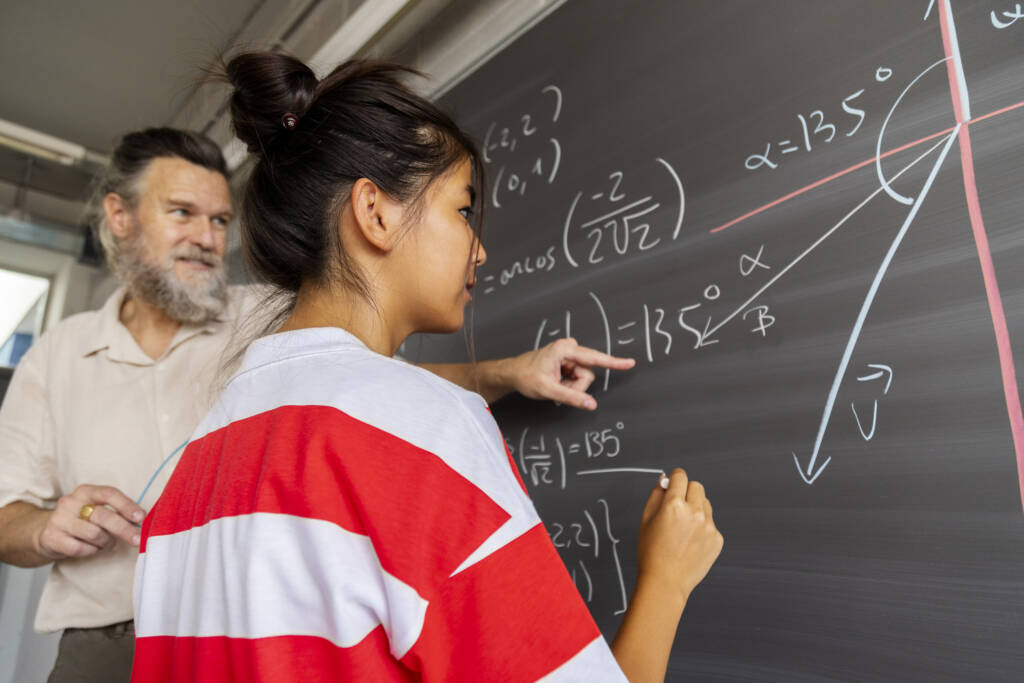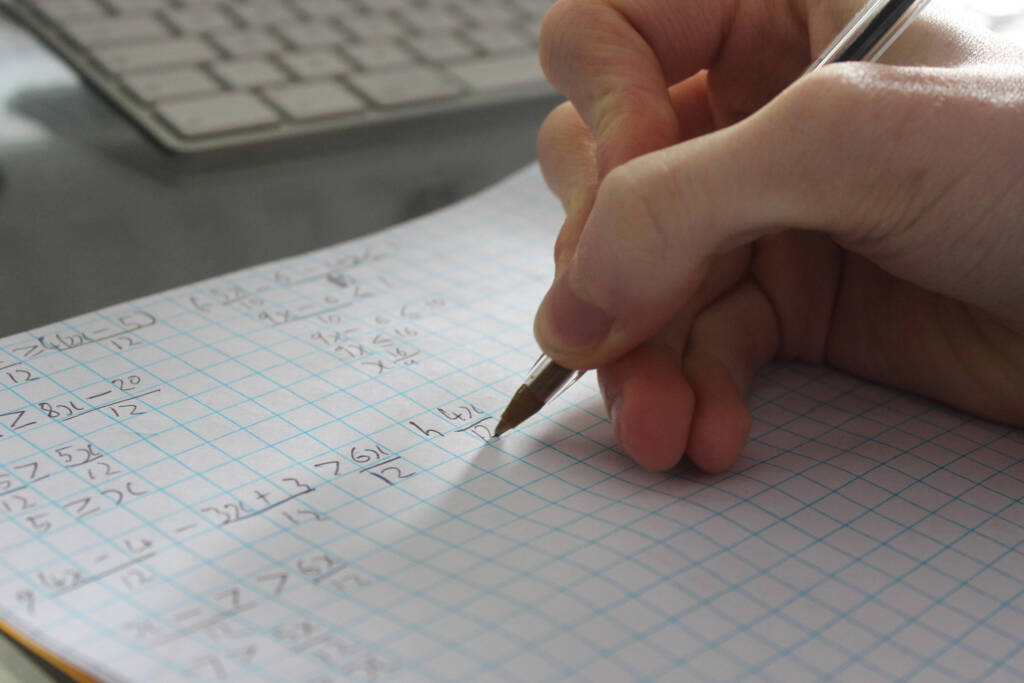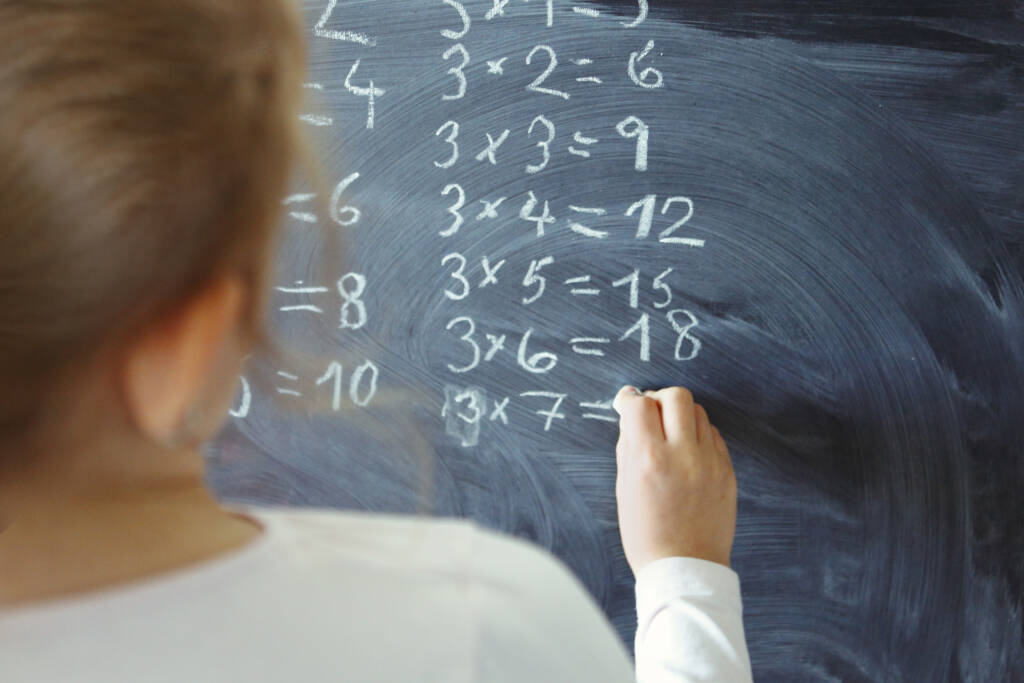
Middle School Math 2 (Grade 7)

Students who love interactive learning will enjoy M/J Mathematics 2. They experience intrigue and fun when they log in to this course. M/J Mathematics 2 is a hands-on course full of slideshows, applications, videos, and real-world scenarios.
The instruction in this course focuses on four critical areas:
(1) developing an understanding of and applying proportional relationships
(2) developing an understanding of operations with rational numbers and working with expressions and linear equations
(3) solving problems involving scale drawings and informal geometric constructions, and working with two- and three-dimensional shapes to solve problems involving area, surface area, and volume
(4) drawing inferences about populations based on samples.
Major Topics and Concepts
Module One
- The Number Line
- Adding and Subtracting Rational Numbers
- Multiplying Rational Numbers
- Strategies for Rational Numbers
- Irrational Numbers
- Approximating Rational Numbers
Module Two
- Dividing Rational Numbers
- Converting Rational Numbers
- Rational Numbers in the Real World
- Exponents
- Operations with Roots
- Scientific Notation
- Operations with Scientific Notation
Module Three
- Expanding and Simplifying Expressions
- Applications of Expressions
- Equations
- Inequalities
- Linear Equations
- Systems of Equations
Module Four Advanced
- Unit Rates
- Characteristics of a Proportion
- Proportionality and Equations
- Application of Ratios
- Applications of Percents
- Graphing Proportional Relationships
- Slope-Intercept Form
Module Five
- Scale Drawings
- Angles and Triangles
- Circles
- 3-D Figures and Cross Sections
- Transformations
- Congruency
- Transformations and the Coordinate Plane
- Transversals and Angles
Module Six
- Understanding Probability
- Approximating Probability
- Probability Models
- Data Observation
- Pythagorean Theorem
- Applications of the Pythagorean Theorem
- Pythagorean Theorem on the Coordinate Plane
- Formulas
Module Seven
- Representing Sample Spaces
- Understanding Compound Events
- Probability Simulations
- Introductions to Functions
- Understanding Linear Functions
- Applications of Functions
- Analyzing Functions
Module Eight Advanced
- Samples and Inferences
- Statistical Variability and Comparing Populations
- Applications of Statistics
- Scatterplots
- Line of Best Fit
- Interpreting Lines
- Frequency Tables
Competencies
Rational Numbers
Students will demonstrate an understanding of rational numbers by explaining addition of rational numbers, explaining subtraction of rational numbers, describing multiplication rules, and solving problems using the properties of operations.
Rational Number Applications
Students will demonstrate an understanding of rational number applications by describing division rules, solving problems using the properties of operations, converting rational numbers, and solving real-world problems involving rational numbers.
Equations and Inequalities
Students will demonstrate an understanding of equations and inequalities by solving linear equations, describing equivalent expressions, and graphing real-world problems involving multi-step inequalities.
Proportions
Students will demonstrate an understanding of proportions by describing proportions, explaining proportional relationship models, and solving problems involving rates, ratios, and percents.
Geometry and Measurement
Students will demonstrate an understanding of geometry and measurement by explaining scale drawings, describing properties of triangles, solving problems involving circle formulas, solving problems involving volume and area, and describing cross-sections.
Probability
Students will demonstrate an understanding of probability by describing probability value, explaining theoretical probability, and explaining experimental probability.
Compound Events
Students will demonstrate an understanding of compound events by explaining sample space and predicting compound events.
Statistics
Students will demonstrate an understanding of statistics by describing sampling, formulating inferences and predictions, explaining measure of center, and explaining variability.
